SPIN Selling: All-In-One Guide for 2022
Melissa Williams
SPIN Selling teaches us the same lesson as a GPS: the best way to get where you want to go is to ask.
Instead of figuring out how to get there, you scrap the printed maps, guesstimates, and wrong turns. And you just ask for help.
This simple action makes your path completely clear.
In this case, the path is turning a prospect into a customer and crushing your quota.
Whether it’s cold calls or cold emails, you can use elements of SPIN selling to significantly improve the outcomes of buyer conversations in the sales process.
Here’s what we’ll cover:
- What is SPIN Selling?
- The 4 Stages of SPIN Questions
- SPIN Selling Ground Rules
- The Science Behind Why SPIN Selling Wins New Customers
What is SPIN Selling?
SPIN Selling is a bestseller book that was first published in 1988 by Neil Rackham.
It’s all about asking the right questions. And it’s very tactical.
It teaches you how to lead conversations with customers. You transition through four different types of questions: Situation, Problem, Implication, Need/Payoff.
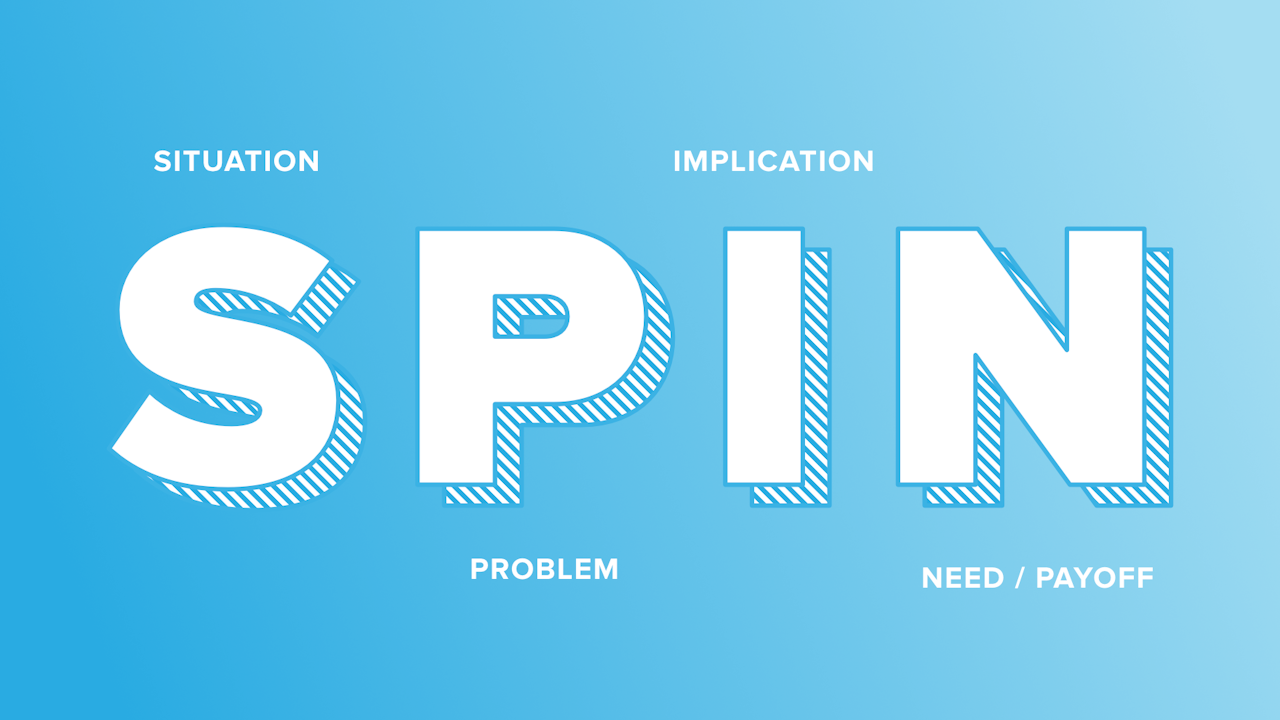
Rackham covers observations from 35,000 sales calls over 12 years. And his work continues to be one of the best sales books out there today.
In fact, a recent analysis of seven times more calls with advanced AI technology tells us the same thing:
Conversations in which sellers mostly listen and buyers talk lead to the highest close-win rate.
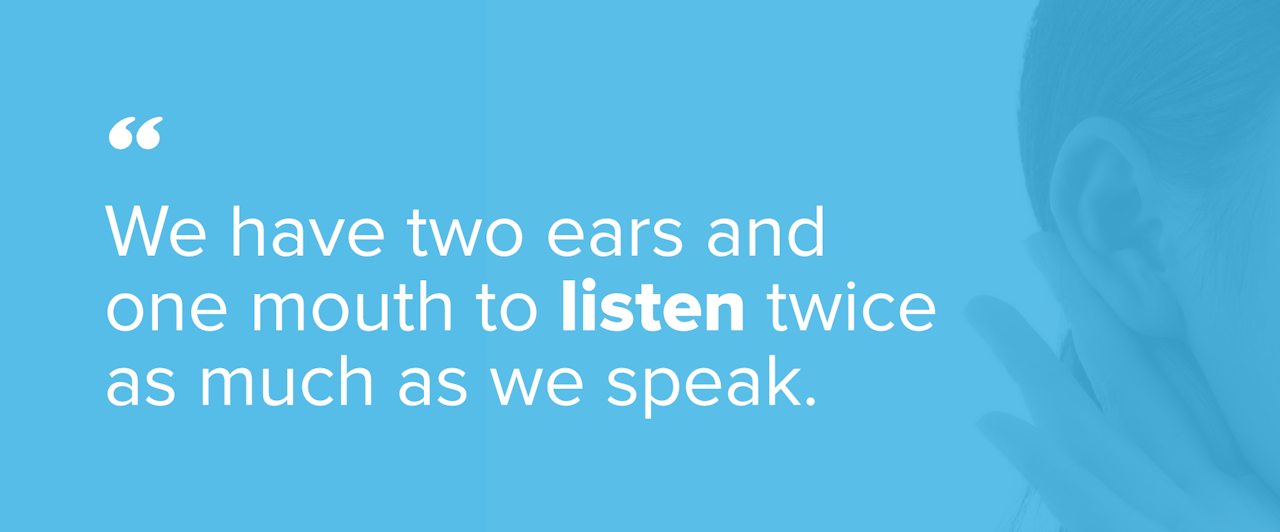
It’s the heart of consultative selling. And sounds like common sense, right?
Consultative Selling
Still, not all sales reps practice consultative selling.
Why?
Because we defer to what we’re familiar with. Sellers know the ins and outs of their product or service and how it benefits customers, so they dive right in.
And time is precious.
Buyers are busy managing tools and services and spending too much time on that issue you plan to solve. And you have other calls and meetings back-to-back.
So you cut to the chase.
Because the fastest way from A (your conversation) to B (booking the deal) is to jump right into the solution.
Except it’s not.
You need a 360° view of where they are. Otherwise, you won’t understand their pains versus your average customer’s or their immediacy.
It’s worth putting in the time now to listen so you can better allocate both of your time going forward.
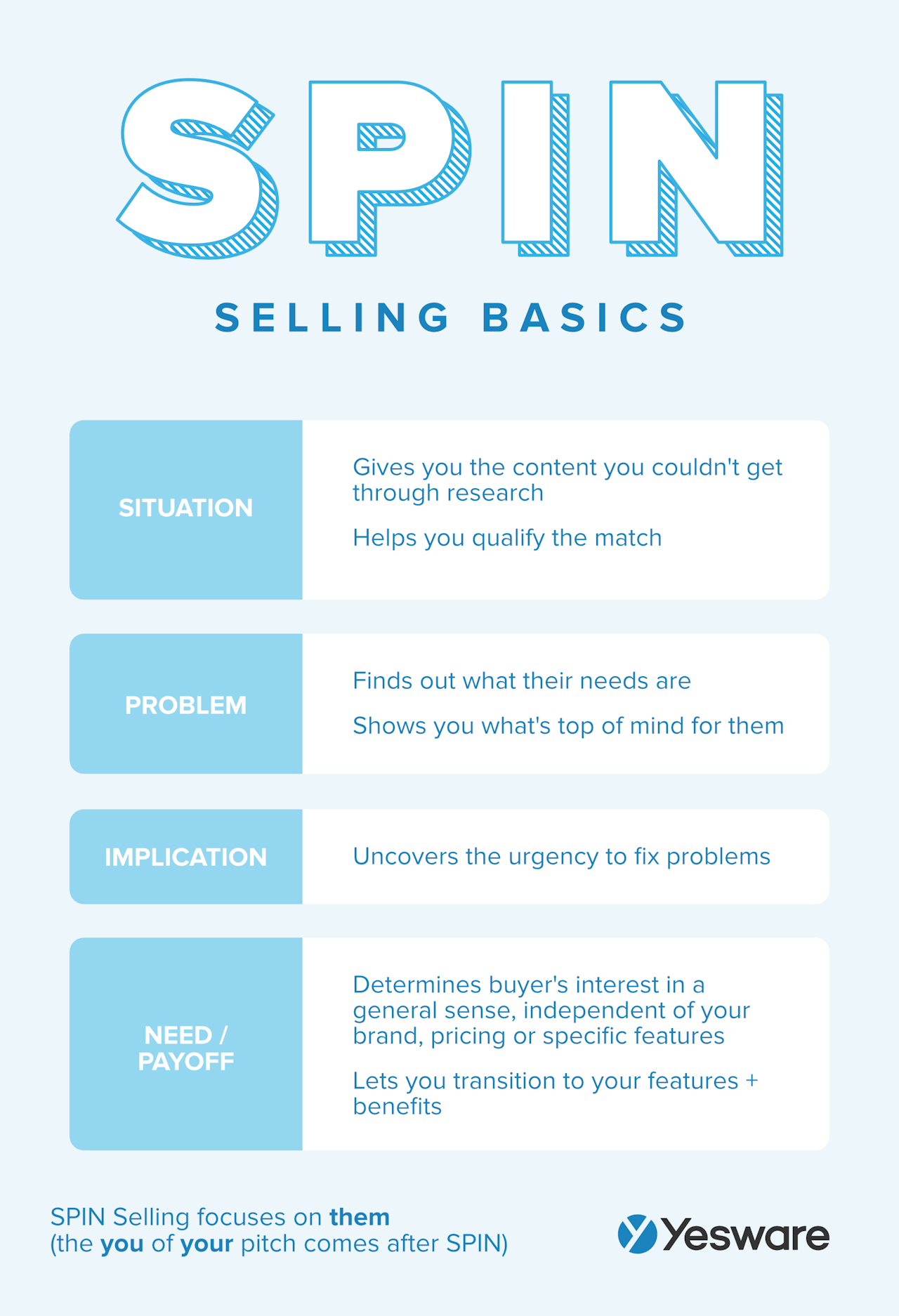
Sometimes SPIN means finding out they aren’t qualified. Or that they went through this buying process a year ago but broke their contract with a competitor.
Every time, using SPIN Selling properly means whittling your pitch to exactly what they need.
The 4 Stages of SPIN Questions
Situation Phase
The Situation Phase is learning more about their current resources, process, and results.
What to Do: Explain that you want to run quickly through where they’re at so you make the best use of their time.
Examples of Situation Questions:
- [Recap what you’ve found so far in your research.] Did I get that right?
- Catch me up to speed — How do you manage a process like [x]?
- How do you keep track of [x]?
- What is your process for maintaining an overview of [x]?
How It Works:
Ever heard of pacing and leading?
It’s a Neuro-Linguistic Programming (NLP) technique. It sounds fancy but is really simple:
You set the pace of a conversation by starting where they’re at. Basically, you mirror their language and voice tone to gain rapport.
From there, you start to change your behavior and they follow. In this case, you’re asking questions and they stay in line with you, answering where you guide them to. This leads them toward the ultimate solution that you will introduce.
Moreover, research shows that talking about ourselves activates the reward center of our brains. Study participants gave up money to share about themselves; that’s how important it was to them. Questions give you the information you need and buyers the opportunity to talk.
Problem Phase
The Problem Phase is using subtle techniques to get them to point out the issue on their own.
Examples of Problem Questions:
- How much time are you spending to do [x] on your own?
- Do you find that it’s expensive to [do the action you’ve been doing to get to X result]?
- What’s the biggest hurdle you’re facing right now with managing [x goal]?
- Have you ever looked into fixing this problem? If yes, get the full scope of the problem, their attempted solution, and their budget, then skip to Need/payoff
Why It Works:
Oftentimes, we have pain points that subconsciously bother us. Or we know a piece of the problem that’s staring us in the face, but we don’t think about every aspect to it.
Asking questions helps them figure out they have it on their own.
Getting them to identify the problem on their own is effective in two ways:
- You’re a stranger to them, and instinctively, we don’t trust strangers — but we do trust ourselves. Instead of trying to convince them, this technique makes them their own change agent.
- Studies show that it’s hard to know for sure whether others agree with us. It’s called the false consensus effect. Asking them questions avoids this problem by getting direct feedback.
Implication Phase
The Implication Phase is helping them to see the web of negative effects from their problem.
This way, they reach for the solution rather than you pushing it.
Examples of Implication Questions:
- If [necessary task] doesn’t happen, what’s the impact on [team]’s outlook?
- If [x resource] is [problem1] and [problem2], what does that mean for [stakeholder]?
- If you can’t [necessary ability], how much [resource like time] do you need to fix it?
How It Works:
Be careful with this one. Blindly following the questions gets you into trouble — a mistake that many salespeople who follow the SPIN sales strategy fall into:
Just take it from this Harvard Business Review article:
“Nothing falls flatter in a sales call than a question that is clearly self-interested, or makes the seller the master of the obvious. […] It can be useful to explore the buyer’s challenges, but when a seller asks a ridiculous question with an obvious answer such as, “What’s the implication of data center failure?” it can backfire. It’s counterproductive to ask patently manipulative questions because buyers immediately put up their defenses and will be skeptical of the seller’s intentions – and intelligence. Instead, ask questions that demonstrate genuine curiosity, empathy, and a desire to understand.”
So, if you already know the implications of a problem, go ahead and state an implication. Then, pass it back to them with an open-ended sales question that lets them add more feedback like:
“Has that come up for you before?”
Need-Payoff Phase
The Need-Payoff Phase is leading them to identify the benefits of a solution.
If you’ve done it well, they’ll be telling you the benefits of your product/solution without realizing it.
Examples of Need-Payoff Questions:
- Why is being able to [action that encompasses end goal] important to you?
- If you could cut the amount of [resource required] to [end goal], what impact would that have?
- If you could easily see [something that is unclear for them right now], how would that help you achieve [end goal]?
Many buyers today are aware of the problem — convincing them isn’t the challenge. It’s helping them convince their boss.
What to Do:
The best thing you can do is help them sell upwards internally to the final decision-maker. Before you jump into the details of your solution, learn more about their hurdles. If they need to get buy-in, plan to follow up with an email laying out the situation. And let them know while you’re still on the call that they are welcome to forward the email you’ll be following up with.
This email should: exacerbate the need, the implication of lost dollars and time, and the ROI of your solution. Case studies give social proof. They show your buyer that their peers trust you and have seen the same results they need. It’s also helpful to give your contact access to your tool so they can become an advocate for you within their company.
Tip: Grab some highly effective email templates below.
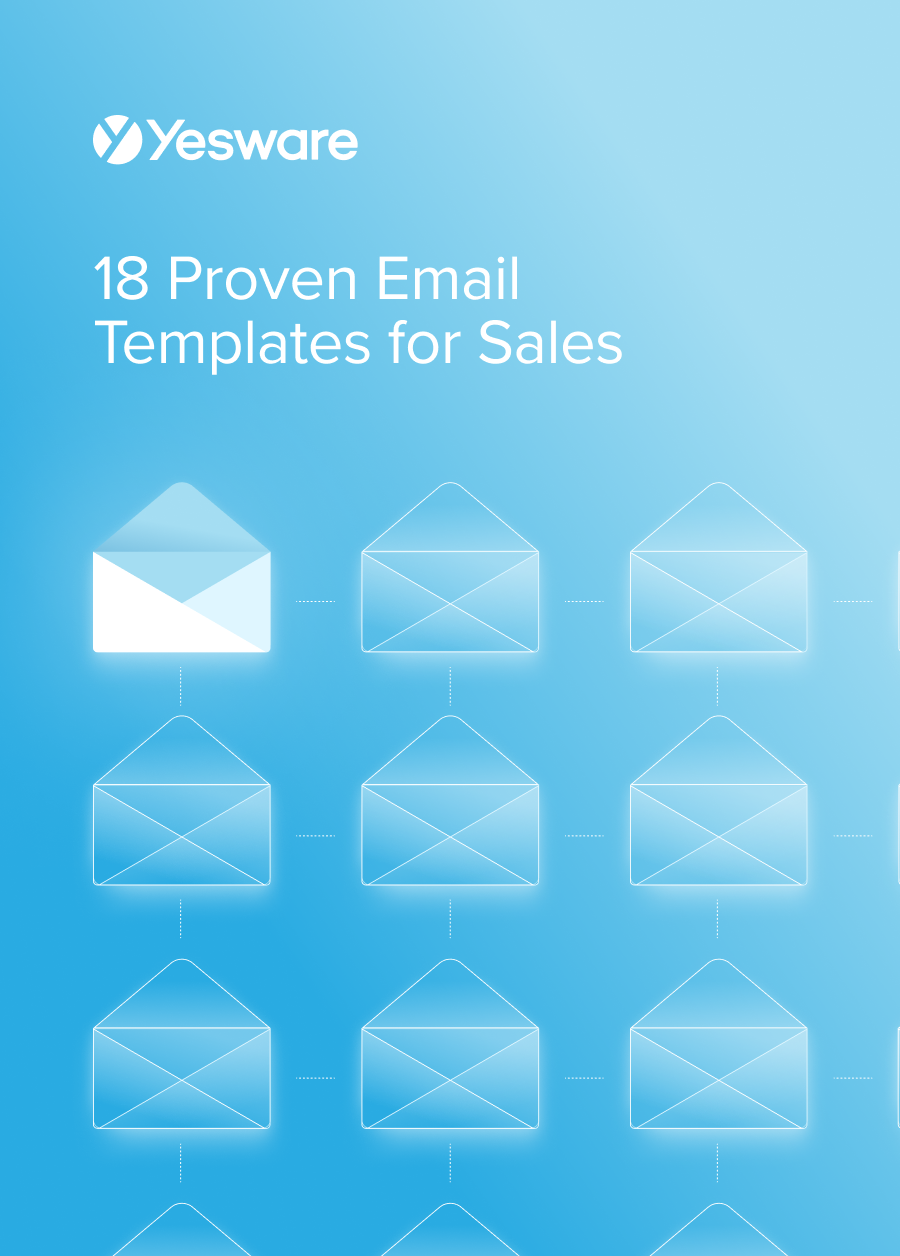 18 Proven Email Templates for SalesWinning email templates for cold outreach, follow-ups, and nurturing relationships – backed by data and real-world examples.
18 Proven Email Templates for SalesWinning email templates for cold outreach, follow-ups, and nurturing relationships – backed by data and real-world examples.SPIN Selling Ground Rules
- SPIN Selling is a blueprint, not a bible.
- One size does not fit all. The time you spend on each letter of S-P-I-N (and whether you need to cover every area) depends on where your buyer is at. Listen to their words, tone, and schedule.
- This sales technique works best when your prospect isn’t aware of the full scope of their problem. If you can help them understand implications they haven’t thought of, do so.
- This book is three decades old, which means we have to factor in customer evolution. Many buyers self-educate before scheduled calls. They’re often acutely aware of their own problem and needs. This may mean your time spent on Problem and Implication is more information-gathering than educating.
- You need to research them before the conversation to get everything you can in advance. Asking questions you could have found answers to implies that you’re lazy and they’re not a priority. The meat of your conversation should focus on the P-I-N.
- SPIN is not intended to be used as a checklist of questions. In fact, I promise you it won’t work if you use it that way. Buyers can read right through that. You need to wrap your questions into a natural conversation.
- For every question that you ask, really listen to their answer. Don’t just “mmhmm” and then move on. Reply with something meaningful to show that you’re digesting what they say. It could be validating their frustration, clarifying, or sharing a similar customer situation.
- SPIN Selling is only part of the solution:
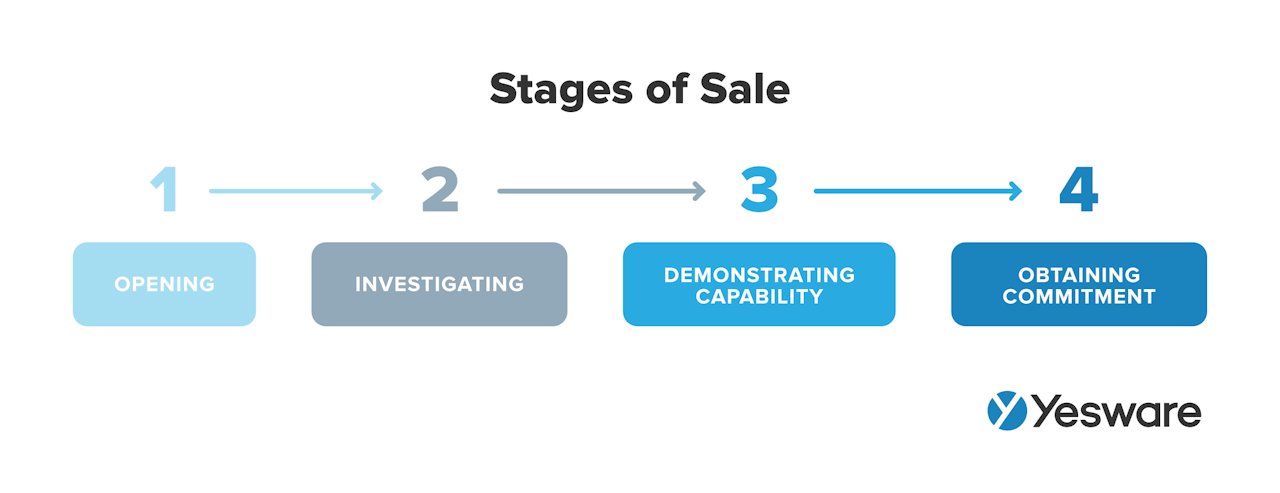
SPIN covers the first two, setting the stage for you to get to the second two (demo & close).
The Science Behind Why SPIN Selling Wins New Customers
There are two chemicals at play for both buyers’ and sellers’ brains:
Cortisol is driven by negative emotions. It shuts down the thinking center of our brain. This causes us to become more sensitive, defensive, and perceive greater negativity.
Oxytocin is driven by positive emotions. It increases our ability to trust others, communicate, and collaborate.
Now, separate out the two types of selling. There are 1) sellers aggressively pushing their own agendas, and 2) sellers asking genuine questions.
Look at the study finding below. It’s based on managers and their reports. Keep in mind that the same behaviors relate to sellers and buyers.
Notice how the red and blue behaviors line up with the two types of selling?
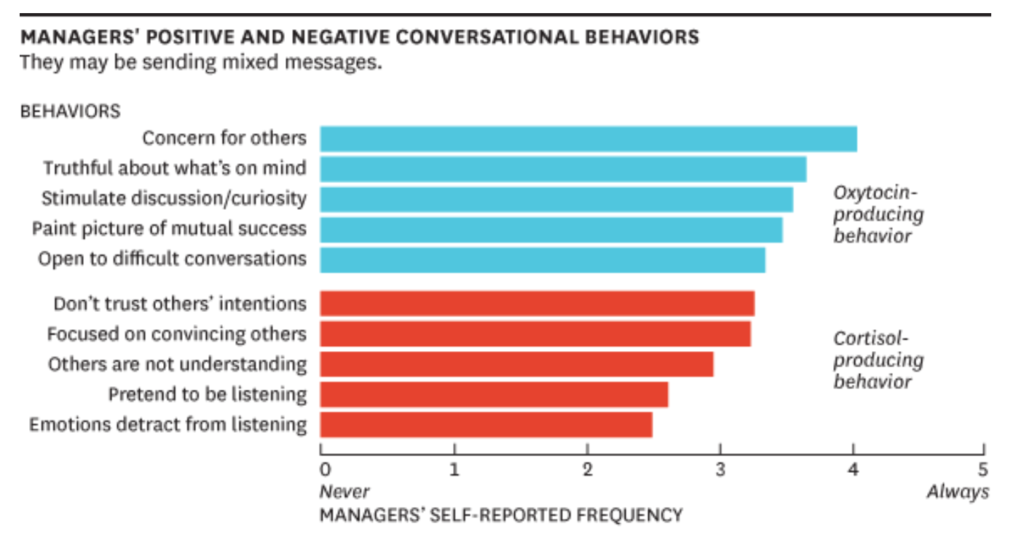
The behaviors and beliefs that produce oxytocin, like “concern for others” and “stimulates discussion/curiosity,” relate to SPIN Selling.
And the cortisol-inducing behaviors personify pushy sellers who don’t use SPIN or apply it in the wrong way, like “focused on convincing others” and “pretend to be listening.”
Now flip that and look at it from the perspective of the buyer. When someone is interested in you, it causes you to be truthful about what’s on your mind. But when someone pushes you into a corner with their pitch, you shut down. You don’t trust them, and instead, focus on how uninvited their presumptuousness is.
Wrapping It Up
Although this technique has been around for a while, it’s still a super powerful sales methodology that sales teams see continuous success with in the selling process.
We’ll leave you with some final points:
- SPIN = Situation, Problem, Implication, Need-Payoff
- Don’t treat the questions above as a checklist. Do identify the ones that make the most sense to your business and your prospect, and work them naturally into your conversation.
- Practice makes perfect. Block off some time with a peer or your manager to roleplay a call. That way, you’re on the spot like you would be with a real prospect.
- Ask a more tenured peer to shadow a few of their calls so you can see SPIN Selling firsthand.
Get sales tips and strategies delivered straight to your inbox.
Yesware will help you generate more sales right from your inbox. Try our Outlook add-on or Gmail Chrome extension for free, forever!
Related Articles
Melissa Williams
Melissa Williams
Casey O'Connor
Sales, deal management, and communication tips for your inbox

